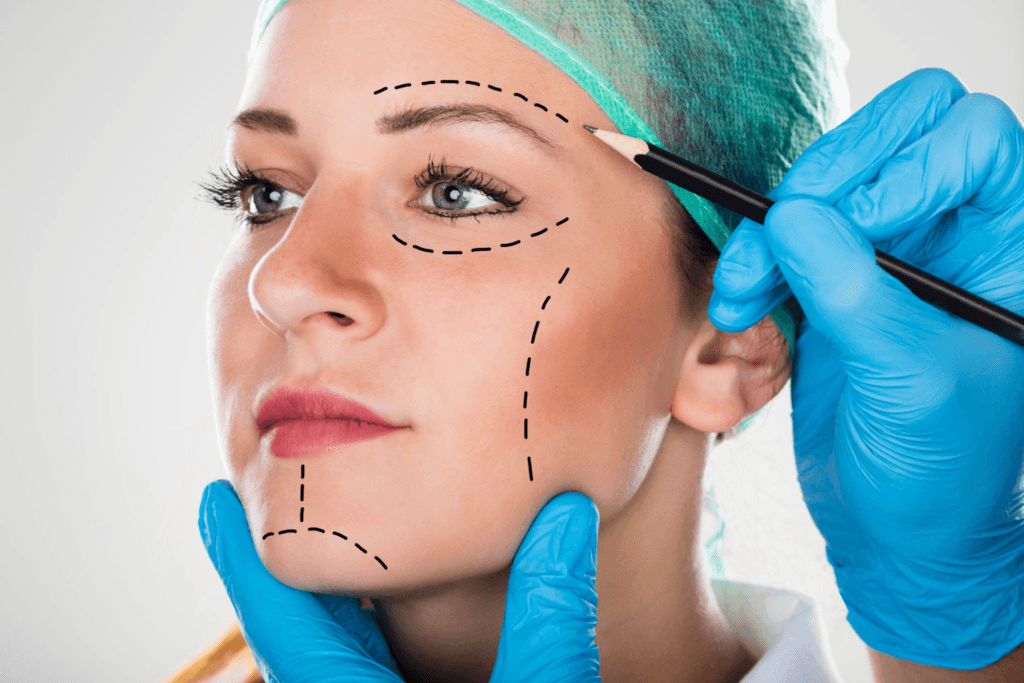What happens to your face 10 years after a face lift? A facelift, or rhytidectomy, is a popular cosmetic procedure aiming to rejuvenate the face by addressing sagging skin, wrinkles, and loss of volume. While offering significant improvements, it’s crucial to understand the long-term effects and what to expect a decade after surgery. This article explores the changes your face may undergo in the years following a facelift.
Table of Contents
Immediate Post-Surgery Results
The immediate results after a facelift are dramatic. Patients typically experience a significant reduction in sagging skin around the cheeks, jawline, and neck. Wrinkles and folds are visibly lessened, creating a smoother, more youthful appearance. Swelling and bruising are expected, varying in severity depending on the individual and the extent of the procedure. The initial transformation is often quite striking, though it’s important to remember that this is a temporary state, as swelling and bruising will gradually subside.
The initial tightness of the skin is also a common immediate effect. This is due to the surgical manipulation and repositioning of tissues. While this feeling of tightness will diminish over time, it’s a normal part of the healing process. Patients should expect to see a gradual softening of the skin as healing progresses. Photographs taken immediately post-op should be viewed with caution, as they don’t reflect the final, settled result.
Finally, it’s important to note that the immediate results are not the final results. The full effect of the facelift will be apparent only after several weeks or months as the swelling completely resolves and the tissues settle into their new positions. This allows for a more accurate assessment of the long-term effects.

Healing and Recovery Timeline
The healing process after a facelift typically involves several stages. The first few days are characterized by significant swelling, bruising, and discomfort. Pain medication is usually prescribed to manage this. Stitches are typically removed within a week to ten days. Over the next few weeks, the swelling gradually reduces, and bruising fades. Patients can expect to return to normal activities within a few weeks, although strenuous exercise should be avoided for several more weeks.
During the first few months, the skin continues to soften and settle. The initial tightness gradually subsides, revealing a more natural-looking result. Some patients may experience numbness or tingling in certain areas, which usually resolves over time. Regular follow-up appointments with the surgeon are essential during this period to monitor healing and address any concerns.
By six months post-surgery, most patients have achieved the majority of their final results. However, subtle changes may continue to occur over the following months as the tissues continue to heal and settle. At this point, the long-term effects of the surgery become more predictable, although individual results will always vary.
Long-Term Facial Changes
Ten years after a facelift, the effects of the procedure will have diminished to varying degrees. While a facelift doesn’t stop the natural aging process, it can significantly delay its visible effects. The degree of improvement remaining after a decade depends on several factors including the patient’s age at the time of surgery, their genetics, their lifestyle, and the extent of the original procedure.
Some patients might still retain a noticeable improvement in the jawline definition and cheek lift, resulting in a more youthful appearance than they would have had without surgery. However, the extent of improvement will be less dramatic than immediately post-op. The skin will inevitably show signs of aging, including wrinkles and some degree of sagging, though these will likely be less pronounced than if the surgery hadn’t been performed.
Individual variation is crucial to consider. Some individuals might experience a more significant reduction in the initial results than others. Factors such as sun exposure, smoking, and overall health significantly influence the longevity of the facelift results. Maintaining a healthy lifestyle can help prolong the effects of the surgery.
Natural Aging Processes Continue
Despite the rejuvenating effects of a facelift, the natural aging process continues unabated. Gravity, sun exposure, and other environmental factors will continue to contribute to skin sagging, wrinkle formation, and volume loss. These changes will be less dramatic than they would have been without the facelift, but they will still occur.
Ten years after surgery, the effects of gravity will be more evident. This may manifest as a recurrence of some sagging in the cheeks, jowls, and neck. New wrinkles may also develop, particularly around the eyes and forehead, areas not typically addressed by a facelift. The loss of facial volume, a natural consequence of aging, will also continue, leading to a potential hollowness in certain areas.
Understanding that aging is a continuous process is key to managing expectations. A facelift aims to significantly delay, but not entirely halt, the signs of aging. This means that even with a successful facelift, some degree of aging will be visible a decade later. It is important to have realistic expectations and discuss these with your surgeon before undergoing the procedure.
Maintaining Your Results
Maintaining the results of a facelift involves a combination of lifestyle choices and potential additional treatments. Protecting your skin from sun damage is paramount. Consistent use of broad-spectrum sunscreen with a high SPF is crucial in preventing further wrinkles and sagging. A healthy diet, regular exercise, and sufficient hydration also contribute to maintaining skin elasticity and overall health.
Minimizing smoking and limiting alcohol consumption can also help preserve the results of the surgery. Smoking constricts blood vessels, hindering healing and increasing the risk of complications. Alcohol can contribute to dehydration and inflammation. These lifestyle choices can significantly impact the longevity of the facelift results.
In addition to lifestyle modifications, some patients may opt for additional treatments to complement their facelift results. These might include non-invasive procedures like Botox, fillers, or laser treatments to address specific areas of concern. These treatments can help maintain a youthful appearance and prolong the benefits of the initial surgery.
Considering Revision Surgery
After ten years, some patients may consider revision surgery to address the effects of continued aging or to refine the initial results. This is a personal decision dependent on individual preferences and the extent of the changes observed. A consultation with a qualified plastic surgeon is crucial to assess the feasibility and appropriateness of revision surgery.
The surgeon will evaluate the current condition of the face, assess the degree of sagging or other changes, and discuss the potential options for revision. This may involve a full facelift, a mini-lift, or other procedures to address specific areas of concern. The surgeon will also consider the patient’s overall health and any potential risks associated with the procedure.
It’s important to choose a surgeon with extensive experience in revision surgeries. Revision facelifts can be more complex than initial procedures, requiring a high level of skill and precision. Open communication with the surgeon is essential to ensure realistic expectations and a successful outcome.
Conclusion: What happens to your face 10 years after a face lift?
A facelift can provide significant rejuvenation, but it’s not a permanent solution to aging. Understanding the long-term effects, including the continued progression of natural aging processes, is crucial for managing expectations and making informed decisions about potential revision surgery. Maintaining a healthy lifestyle and considering complementary treatments can help prolong the benefits of the initial procedure, allowing patients to enjoy the results for many years.
Transform Your Confidence with Surgyteam!
Join the thousands of satisfied patients who have experienced the exceptional care and expertise of Surgyteam’s renowned plastic surgeons. Whether you’re seeking aesthetic enhancements or reconstructive surgery, our dedicated team in Antalya is here to provide you with the highest quality treatment and personalized care.



